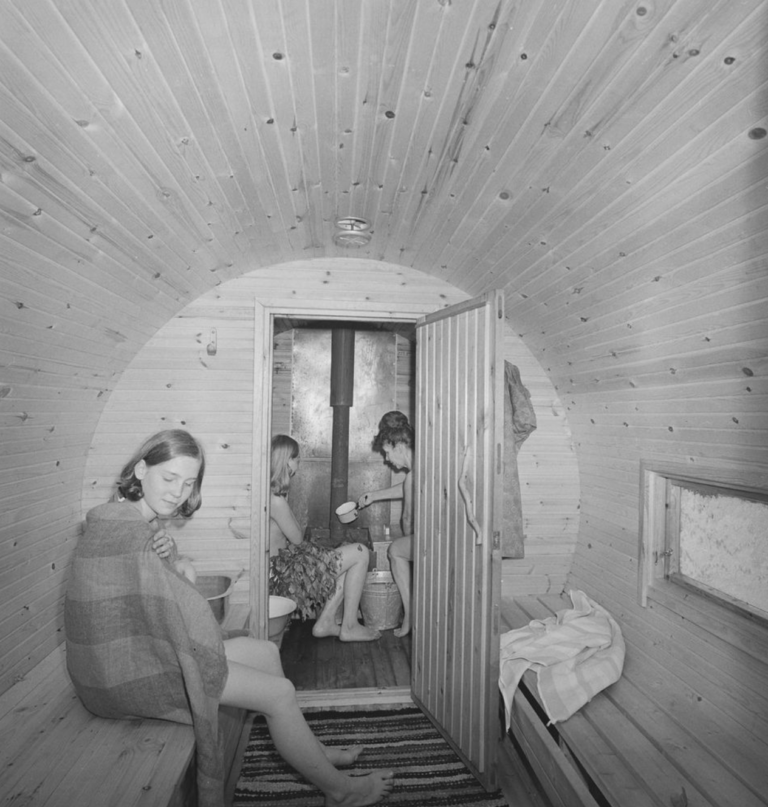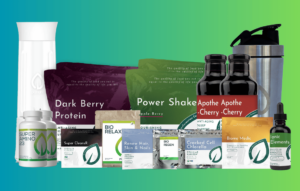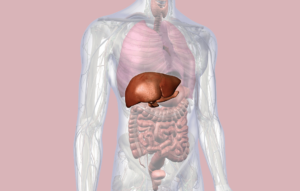Brief History of Saunas
Saunas have been used for thousands of years as a form of therapy, relaxation, and social activity. The history of sauna use dates back to ancient times in many different cultures, including the Native American sweat lodge, the Roman thermae, the Turkish hammam, and the Finnish sauna.
The Finnish sauna, in particular, has a long history and is perhaps the most well-known type of sauna. Sauna is a Finnish word that means “a room for dry or wet heat sessions”. The Finnish sauna has been a part of Finnish culture for over 2,000 years, and it is estimated that there are over 2 million saunas in Finland serving a population of around 5.5 million.
The earliest saunas were likely simple pits dug into the ground and covered with animal skins or branches to create a primary enclosure. Over time, these evolved into more complex structures made from wood and stone, with a fireplace or stove to heat the space.
In Finland, the sauna has been used for a variety of purposes over the centuries. It was used for bathing and hygiene, as well as for socializing, relaxation, and even for giving birth. Saunas were also used as a place for healing and were believed to have medicinal properties. The heat was thought to help purify the body and improve circulation, while the steam could help clear the sinuses and respiratory system.
The popularity of saunas spread beyond Finland in the 20th century, as people began to recognize the health benefits of sauna use. Today, saunas can be found worldwide, in various settings including homes, gyms, spas, and hotels.
In recent years, new types of saunas have emerged, such as infrared saunas and steam rooms. These offer some of the same benefits as traditional saunas but use different methods of heating the space. If you’re interested in learning more about the history of saunas, there are many resources available.
Overall, the history of sauna use is long and varied, and it continues to evolve as new technologies and techniques are developed. Saunas remain an important part of many cultures around the world and are enjoyed by people of all ages and backgrounds for their many health benefits.
Benefits of Regular Sauna Use
The list of why you should be frequently using a sauna is a long one, but I’ve decided to narrow it down to my top eight reasons you should be hopping into a sauna four to five times per week.
As I mentioned, saunas have been used for centuries for relaxation, detoxification, and numerous health benefits. Here’s a brief summary of some of the scientific-backed benefits of saunas:
Reduces the Risk of Cardiovascular Disease: According to a study published in JAMA Internal Medicine, frequent sauna bathing has been linked to a significant reduction in the risk of cardiovascular disease. Sauna sessions can help lower blood pressure, improve blood vessel function, and reduce the risk of heart disease.
Boosts Immune System: Sauna sessions can also help boost the immune system. According to a study published in the Journal of Human Kinetics, sauna sessions can increase the production of white blood cells, which play a crucial role in the body’s immune response.
Relieves Pain and Soreness: Sauna sessions can also help relieve pain and soreness. The heat can help reduce inflammation and increase blood flow to the affected areas.
Improves Skin Health: Sauna sessions can help improve skin health by increasing blood flow to the skin and promoting the production of collagen. This can help reduce the appearance of fine lines and wrinkles and improve overall skin texture.
Reduces Stress and Anxiety: Sauna sessions can also help reduce stress and anxiety. The heat and relaxation can help release endorphins, which are natural mood boosters.
Increases Athletic Performance: Sauna sessions can also increase athletic performance. According to a study published in the Journal of Science and Medicine in Sport, sauna sessions can help increase endurance and reduce fatigue.
Promotes Weight Loss: Sauna sessions can also promote weight loss. The heat can help increase metabolism and burn calories.
My Favorite Sauna Benefit Explained – Heat Shock Proteins & Their Relationship to Longevity
Heat shock proteins (HSPs) are a group of proteins that are produced by cells in response to stress, such as exposure to high temperatures. These proteins play a crucial role in protecting cells from damage and preventing the accumulation of misfolded proteins, which can lead to disease and aging.
Saunas are a well-known source of heat stress that can stimulate the production of HSPs. Regular sauna use has been linked to a number of health benefits, including improved cardiovascular function, reduced inflammation, and improved brain function. Recent research suggests that these benefits may also extend to improving longevity.
One study published in JAMA Internal Medicine in 2015 followed over 2,000 middle-aged men in Finland for an average of 20 years. The researchers found that the men who used saunas four to seven times per week had a 40% lower risk of all-cause mortality compared to those who used saunas once per week or less. The researchers hypothesized that the increased production of HSPs in response to sauna use may be responsible for this protective effect.
Another study published in the Journal of the American College of Cardiology in 2018 found that sauna use was associated with a reduced risk of cardiovascular disease and all-cause mortality. The researchers speculated that the beneficial effects of sauna use may be due in part to the production of HSPs, which can protect against the development of atherosclerosis and other cardiovascular diseases.
Overall, sauna sessions have numerous health benefits, and incorporating them into your routine can have a positive impact on your physical and mental well-being. This goes without saying that everyone’s body is different and you should proceed with caution. There is such a thing as good stress, however, learn to listen to your body when enough is enough.
Different Types of Saunas
There are various types of saunas, each with its unique features and benefits. Here are the most common types of saunas:
Traditional Finnish sauna: This is the most common type of sauna, originating from Finland. It’s a dry heat sauna that typically uses a wood-burning stove to heat the room to temperatures ranging from 80 to 100 degrees Celsius. The humidity levels are low, typically around 10-20%. Users can pour water on the hot stones to increase the humidity levels.
Infrared sauna: This type of sauna uses infrared heaters to emit infrared light that is absorbed by the body, creating a gentle, penetrating heat that can help to improve blood circulation, relieve muscle pain, and detoxify the body. The temperature in an infrared sauna typically ranges from 50 to 60 degrees Celsius, making it a cooler and more comfortable alternative to traditional saunas.
Steam sauna: This type of sauna uses a steam generator to produce moist heat, creating a humid environment that can help to open up the pores, cleanse the skin, and improve respiratory function. The temperature in a steam sauna typically ranges from 45 to 65 degrees Celsius. Personally, I will avoid steam rooms unless the facility has high-end water filtration to filter out the tap water’s chlorine, fluoride, lead, and any other forms of known pollutants.
Banya: This is a traditional Russian sauna that typically involves beating the body with branches of birch, oak, or eucalyptus to improve blood circulation and stimulate the lymphatic system. The temperature in a banya typically ranges from 70 to 90 degrees Celsius, with humidity levels of around 50-60%.
Himalayan salt sauna: This type of sauna uses Himalayan salt bricks to create a warm, relaxing environment that can help to soothe the skin, reduce inflammation, and improve respiratory function. The temperature in a Himalayan salt sauna typically ranges from 40 to 60 degrees Celsius.
Mobile sauna: This is a portable sauna that can be moved to different locations, making it an excellent option for outdoor events, festivals, and camping trips. It can be either traditional, infrared, or steam.
Different saunas offer a variety of benefits, and choosing the right type depends on your personal preferences and needs. Whether you prefer a traditional Finnish sauna or a more modern infrared sauna, the therapeutic benefits of regular sauna sessions are undeniable.
So, what’s my favorite type of sauna?
While I have found benefits from using most of the above-mentioned forms, I like infrared and traditional saunas the best. The sauna studio I go to about 4-6 times per week, HeatPraxia (if you’re in North Idaho this is a must-visit), has traditional saunas, which are pretty cool considering I get to pour water with essential oils over the rocks to aid in my relaxation. I will say though, infrared saunas are probably my favorite because of the deeper detoxification and ability to impact your mitochondrial health. However, this is tricky and dependent on the brand, because a lot of infrared saunas produce an insane amount of electromagnetic frequency that causes more harm than good. They can fry your cells from the inside out. Clearlight and Sunlighten are the best quality infrared saunas I’ve seen on the market, and I will most likely purchase one or the other for my future home gym primarily because of their claimed EMF protection and overall quality standard.
How to Prepare for A Sauna Session
Consuming electrolytes before using a sauna is important because saunas can cause dehydration and electrolyte imbalances, which can lead to serious health issues. Electrolytes are essential minerals, including sodium, potassium, magnesium, and calcium, that are critical for proper bodily function, such as regulating nerve and muscle function, balancing body fluids, and maintaining proper pH levels.
During a sauna session, the body sweats to regulate its temperature. This process causes the body to lose water and electrolytes, especially sodium and potassium. Without enough electrolytes, the body can experience muscle cramps, headaches, fatigue, and nausea, and in severe cases, it can even lead to heat exhaustion or heat stroke.
To prevent these issues, it’s recommended to replenish electrolytes before and after a sauna session. Consuming electrolyte-rich beverages such as coconut water or sports drinks, or taking electrolyte supplements, can help restore the body’s electrolyte balance.
Here are some sources to support the importance of using electrolytes before using a sauna:
A study published in the Journal of Athletic Training found that athletes who consumed an electrolyte-rich beverage before exercise experienced less dehydration and improved performance compared to those who didn’t consume the beverage.
The American Council on Exercise recommends consuming electrolytes before and after exercise, including sauna use, to help maintain proper fluid balance and prevent dehydration.
An article in Medical News Today states that replenishing electrolytes after sweating can help prevent muscle cramps, fatigue, and other symptoms of electrolyte imbalance.
The way that I load up on electrolytes every day is by dropping some Ionic Elements into my purified water and sprinkling in some high-quality Celtic Sea Salt. I will typically pound at least one mason jar-sized glass of mineralized water several times per day, especially before and after using the sauna. To learn more about proper hydration and water sources, check out my water blog here.
Conclusion
In conclusion, saunas have a rich history that dates back centuries, and they continue to provide numerous health benefits today. Whether you prefer a traditional wood-burning sauna, an infrared sauna, or a steam sauna, each type offers unique benefits and can be enjoyed by individuals of all ages and fitness levels.
As we continue to prioritize our health and wellness, saunas remain a valuable tool for achieving optimal physical and mental health. Whether you choose to enjoy a sauna at a spa, gym, or in the comfort of your own home, taking the time to unwind in a sauna is an investment in your long-term health and well-being.
Have an opinion you want to share? Think I’m crazy? Want to ask a question? Please, feel free to leave a comment and begin a dialogue in the comments sections below!
















2 Responses
Fantastic article! Beautifully written and very informative. It was really cool learning about the history and origins of sauna use. This segment has inspired me to get back in there more often. So many benefits to capitalize on. Amazing stuff!!!
Thank you, AJ! Curious if you have stuck to a good sauna routine since your comment last year and if so, what benefits or changes have you noticed within yourself? Do you have a preference for sauna types?